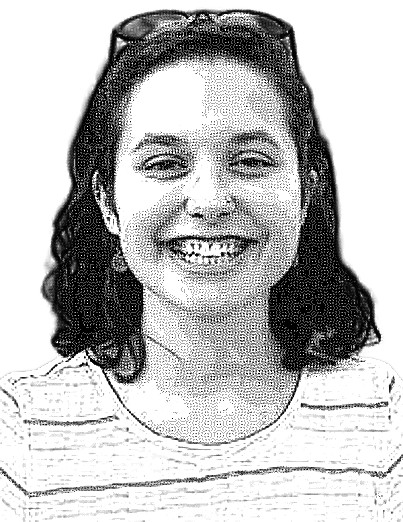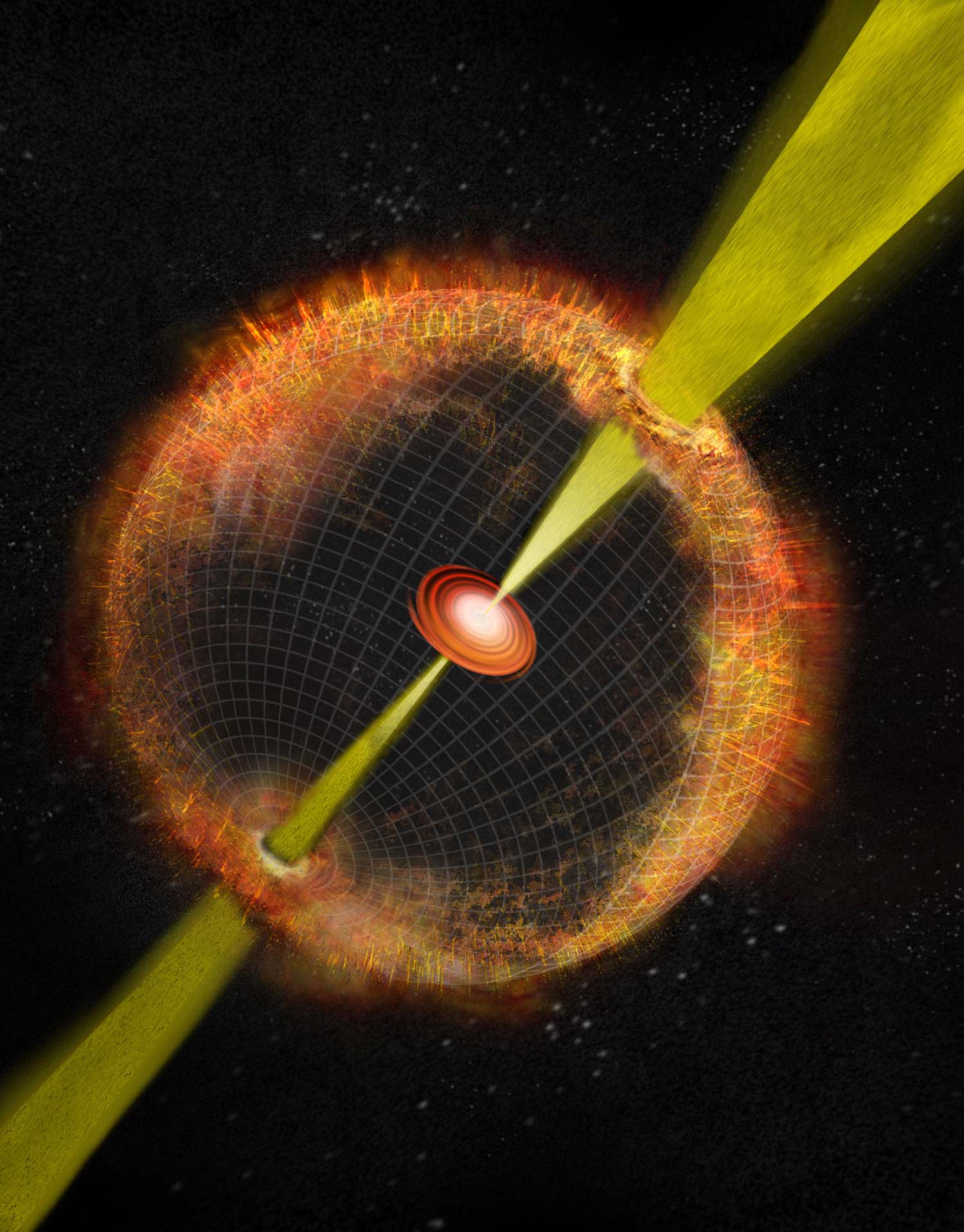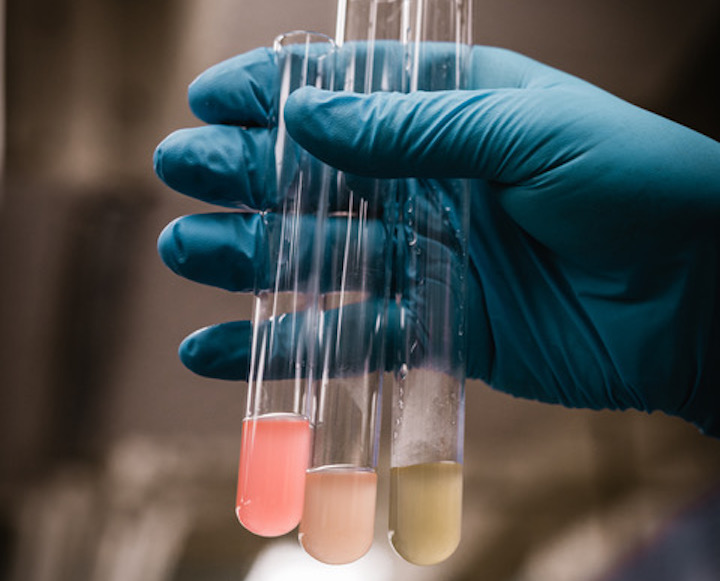
Illustration by Cecilia Sanders for Caltech Letters
Viewpoint articles are a vehicle for members of the Caltech community to express their opinions on issues surrounding the interface of science and society. The views expressed here do not necessarily reflect the views of Caltech or the editorial board of Caltech Letters. Please see our disclaimer.
Growing up, I had only a fuzzy idea of what “being a scientist” looked like. Mostly it seemed to involve wearing a long white coat and knowing a lot of facts about nature, doing complicated math on a chalkboard and mixing dangerous chemicals in exact proportions. I could never have imagined myself as a scientist, because what I loved most was the exact opposite: reading, drawing, and most of all music.
I can hardly remember a time in my life before music. Singing wove through my family’s daily life: we had songs for bedtime and for waking up, for long drives and short ones, even for brushing our teeth. I coveted my grandparents’ piano from age four and started lessons at seven. I remember the first time I saw a violin soloist, a local high school student playing with the Milwaukee Symphony Orchestra. As she began her concerto, I watched the music take over her entire body, almost like she was pouring the notes out of her chest. When I practiced the piano I tried to lean into that feeling, where any idea in my head could move straight through my fingers to the keys, the strings, and then my ears.
As a grade schooler, of course it never occurred to me that playing piano was also an exploration of physics. All sound, musical and otherwise, is made up of waves. These waves slightly compress and expand the air in their direction of travel, causing pressure differences that are sensed by the eardrum and interpreted as sound. Waves are characterized by their frequency (how often they go through a cycle of compression and expansion) as well as their amplitude (how intense these compressions and expansions are). In short, different frequencies result in different pitches, while changes in amplitude correspond to changes in volume.
While noise, or non-musical sound, results from waves with many frequencies with random values, the waves that make up a musical note have only a few frequencies in regular intervals. If I were to play a middle C on the piano, the vibration of the piano string struck by the hammer would produce a wave with a frequency of 262 Hertz and a relatively high amplitude—this is the frequency that you perceive as “C”. At lower amplitudes, the piano string would also produce waves at 524 Hz (2 times 262), 786 Hz (3 times 262), and so on. The presence and amplitude of these higher frequencies, or “overtones,” give the piano its unique sound, so you can tell that you’ve heard middle C on the piano instead of on the guitar or the trombone, even though all three instruments can play that note.

Both the frequency and amplitude of the sound waves created by an instrument dictate the pitch and volume of the note played. Frequency is measured in Hertz (Hz) or the number of waves per second; higher frequency (more waves passing by per second) means higher pitches, while higher amplitude corresponds to higher volume.
When we play music, we create and control these sound waves with our instruments and our bodies. And, when several notes are played together in a chord on the piano or sung by a choir, all of those waves interact to create harmony (when the frequencies have close mathematical relationships) or dissonance (when their relationships are less direct). Dissonance creates tension and harmony relieves it; this duality, grounded in physics, is what gives music its shape and its emotional impact. If you feel elated by the finale of a Brahms symphony or the apex of a Queen song, it is because over thousands of years humans have learned to harness the physics of sound.
Just before middle school, I took up the French horn. Playing a brass instrument is mechanically completely different from playing the piano: on the horn, the sound waves originate from the vibration of your lips on a metal mouthpiece, rather than a hammer striking a string. You can change the waves’ frequency and amplitude by adjusting the speed and volume of your breath and the size of the aperture, or opening, between your lips. From there, vibration travels through your instrument, where it encounters open or closed valves that change the length of the tubing according to which combination of the four keys you press. For example, fast breath, a small aperture, and short tubing creates a higher frequency and amplitude, and you hear a high and loud sound. (Your neighbors probably hear it, too.) Through middle and high school, I gradually learned how to join my body with this strange metal machine and make music.

The author with her instrument of choice, the French horn.
Hannah Dion-Kirschner
Research came into my life in the summer after my freshman year of college. When my initial summer plans fell through, a family friend—a chemist—offered me a position with a coworker, and I gratefully accepted. To my surprise, the work was completely captivating. As the centrifuge whirred and the liquid chromatograph gurgled, these analytical instruments converted hypotheses into samples, and samples into data. Just like the hours I spent practicing my instruments, life in the lab was a feedback loop between ideas and results. Each time I tried to purify a protein or fix an instrument, the resulting data would reveal a little bit more of the system I was trying to understand and, often, show me where to go next. I was hooked.
When I returned to school for my sophomore year, I started working on a geochemistry research project in the Earth science department, where I would later declare my second major. At the same time, I started to think of my music degree program as a research project of its own. In my honors theory course, my ten classmates and I presented compositions in the style of Bach; whiteboard markers perfumed the classroom as we workshopped our pieces, swapping ideas about how to move from harmony to dissonance and back again. During long hours in the practice room I prepared for lessons, concerts, and recitals. The only way to improve was to analyze my sound constantly, making one small adjustment at a time. If I was struggling with a staccato passage (where notes should sound short, with space in between), then one by one I would check and adjust the tension in my abdomen, chest, and throat; the position of my tongue, jaw, and lips; the timing of my fingers, my breath, and my eyes on the page. The ultimate goal was to tell a story with sound, and during a good practice session I could decide how I wanted the story to go. But trying to make music without figuring out the fundamentals is like trying to write a book without using punctuation: you might still dream up a great story arc, but you’ll probably lose some readers along the way.

The author performing with friend Drew Truskowski while studying in the music conservatory at Northwestern University.
Hannah Dion-Kirschner
As my time in the practice room tested the bounds of both my diligence and my creativity, so did my research. Working on a project to investigate plant biomarkers as proxies for past Arctic climate, I collected thousands of data points across dozens of sample types and multiple different analyses. Somehow these measurements were supposed to add up to a new understanding of a tiny piece of the world. But as I stared down a half-dozen Excel workbooks, I struggled to see how I could distill the rows and columns into a kernel of new knowledge. Like much of the data scientists collect, my data set was complex and ambiguous, driven by countless interacting variables. For the first time I was facing science’s complexity head-on, and I was petrified. Gradually, with the help of my eternally patient advisors, I dug into my data set and teased out its implications. Even when we had reached logical, meaningful conclusions, I felt like my analysis had been woefully unscientific. The pieces had come together through what-ifs and intuition as much as through my twentieth survey of the literature.

The author working in the lab, researching how to use certain plant biomarkers to probe the ancient Arctic climate.
Hannah Dion-Kirschner
It has taken me time to realize that this process wasn’t unscientific at all. The archetypal scientist is rational and meticulous, striking a contrast to the passionate and unconventional musician—but this view obscures both the imagination of the researcher and the precision of the performer. As I had matured as a musician, I’d realized that detailed analysis was a prerequisite to musical storytelling. Now, coming into my own as a scientist, I’m learning that my goal is not only to put numbers on a page, but to figure out what they tell us. This last and vital step of a research project requires a lot of background knowledge and a lot of discernment. It also requires imagination and an open mind.
My life has changed dramatically in the last two years, but one major change is that I’ve barely picked up my horn since I graduated college. I had expected that finishing my music degree would feel like losing a part of me, but funnily, I haven’t felt that way at all. I learned to honor the duality of precision and imagination by studying music, and it turns out to be the heart of my daily work as a scientist as well. As I embark on my Ph.D., I expect my future holds many more inscrutable data sets. I hope that, with each one, I can do my best to embrace all sides of what it is to be a scientist.




